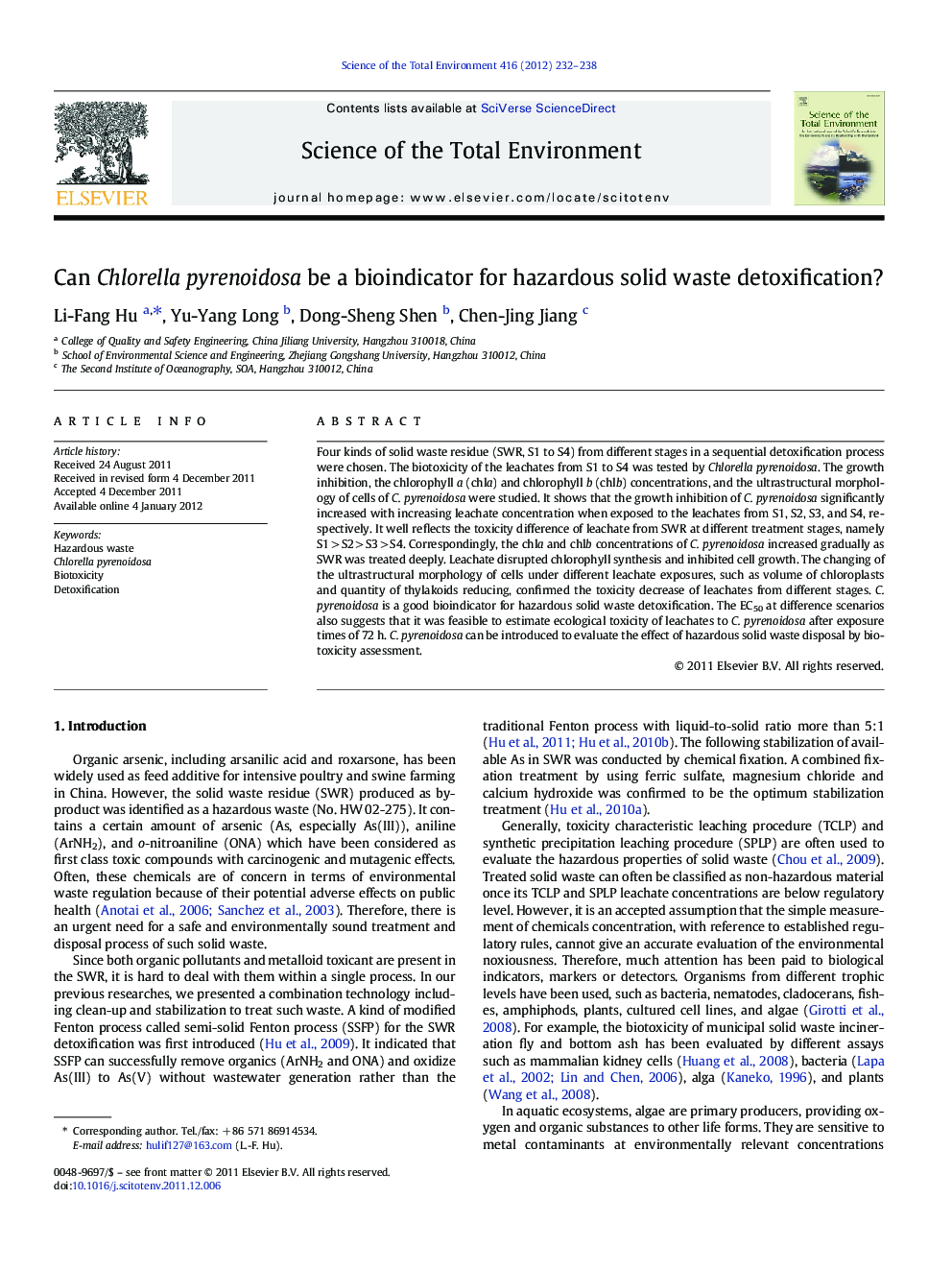| Article ID | Journal | Published Year | Pages | File Type |
|---|---|---|---|---|
| 4429824 | Science of The Total Environment | 2012 | 7 Pages |
Four kinds of solid waste residue (SWR, S1 to S4) from different stages in a sequential detoxification process were chosen. The biotoxicity of the leachates from S1 to S4 was tested by Chlorella pyrenoidosa. The growth inhibition, the chlorophyll a (chla) and chlorophyll b (chlb) concentrations, and the ultrastructural morphology of cells of C. pyrenoidosa were studied. It shows that the growth inhibition of C. pyrenoidosa significantly increased with increasing leachate concentration when exposed to the leachates from S1, S2, S3, and S4, respectively. It well reflects the toxicity difference of leachate from SWR at different treatment stages, namely S1 > S2 > S3 > S4. Correspondingly, the chla and chlb concentrations of C. pyrenoidosa increased gradually as SWR was treated deeply. Leachate disrupted chlorophyll synthesis and inhibited cell growth. The changing of the ultrastructural morphology of cells under different leachate exposures, such as volume of chloroplasts and quantity of thylakoids reducing, confirmed the toxicity decrease of leachates from different stages. C. pyrenoidosa is a good bioindicator for hazardous solid waste detoxification. The EC50 at difference scenarios also suggests that it was feasible to estimate ecological toxicity of leachates to C. pyrenoidosa after exposure times of 72 h. C. pyrenoidosa can be introduced to evaluate the effect of hazardous solid waste disposal by biotoxicity assessment.
► The detoxification process of hazardous solid waste was evaluated by Chlorella pyrenoidosa. ► The best exposure time of ecological toxicity assessment of Chlorella pyrenoidosa was presented. ► The possible toxicity of the hazardous solid waste at different disposal stage on Chlorella pyrenoidosa was explored from cell tissue.
